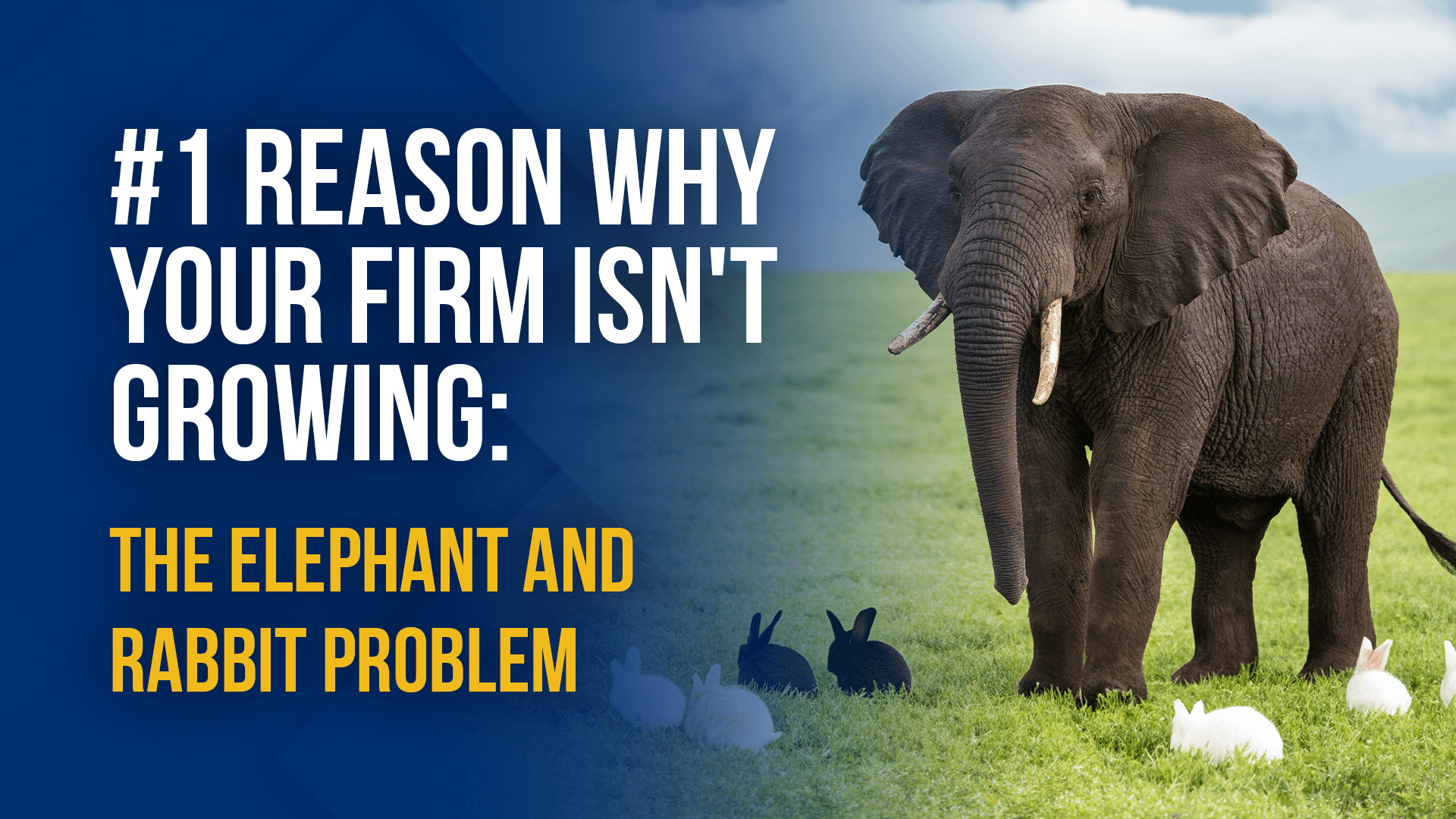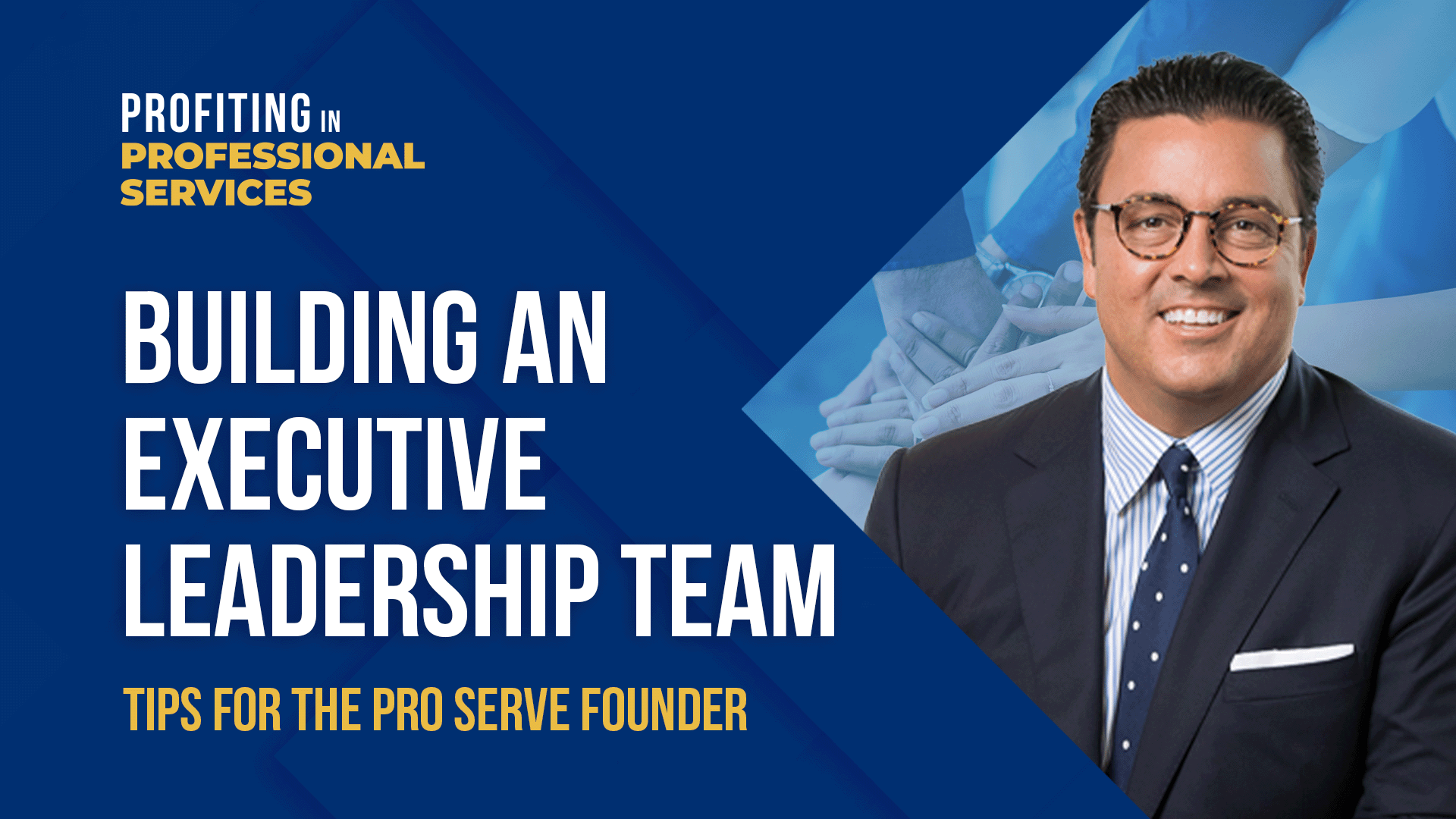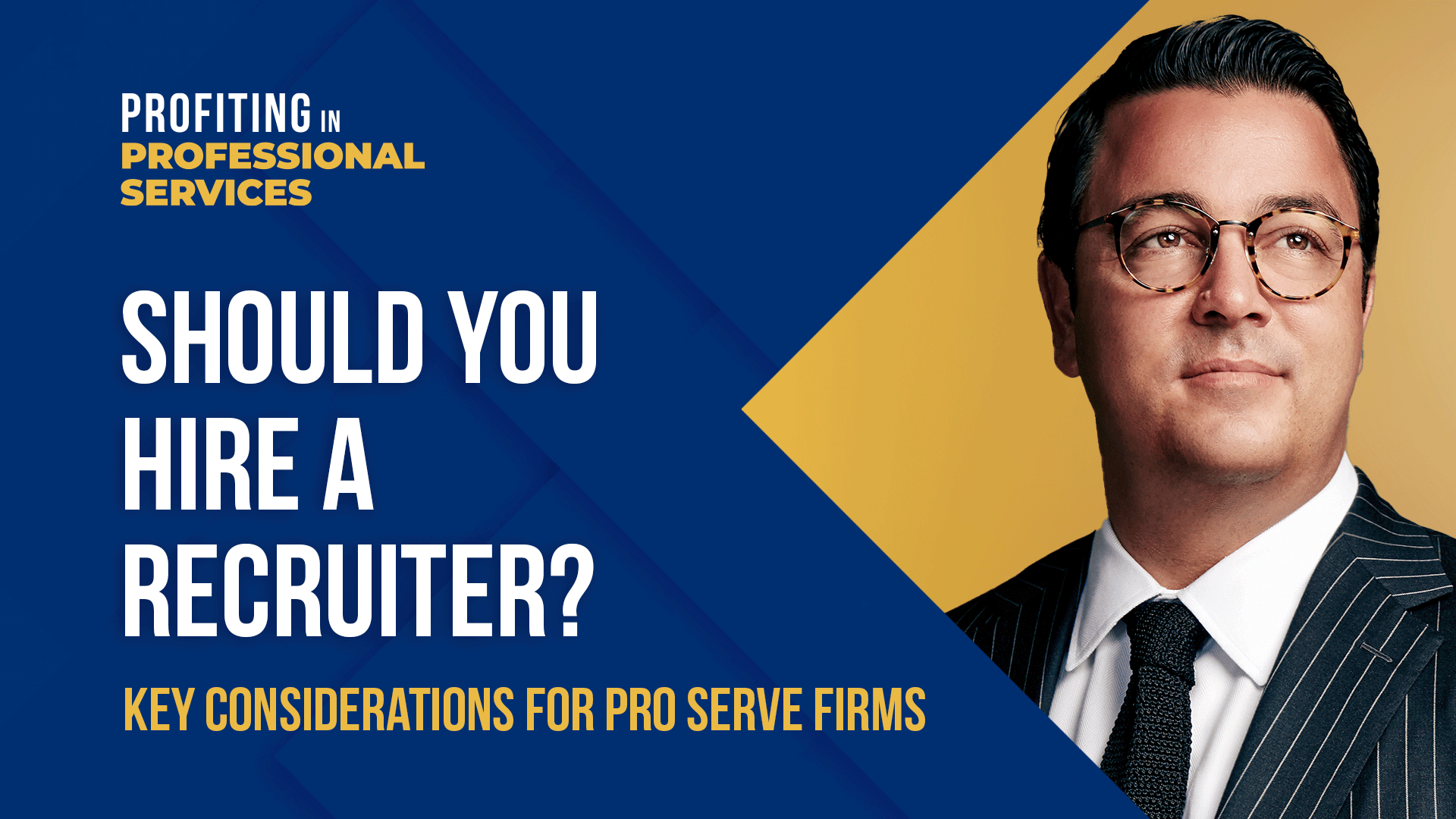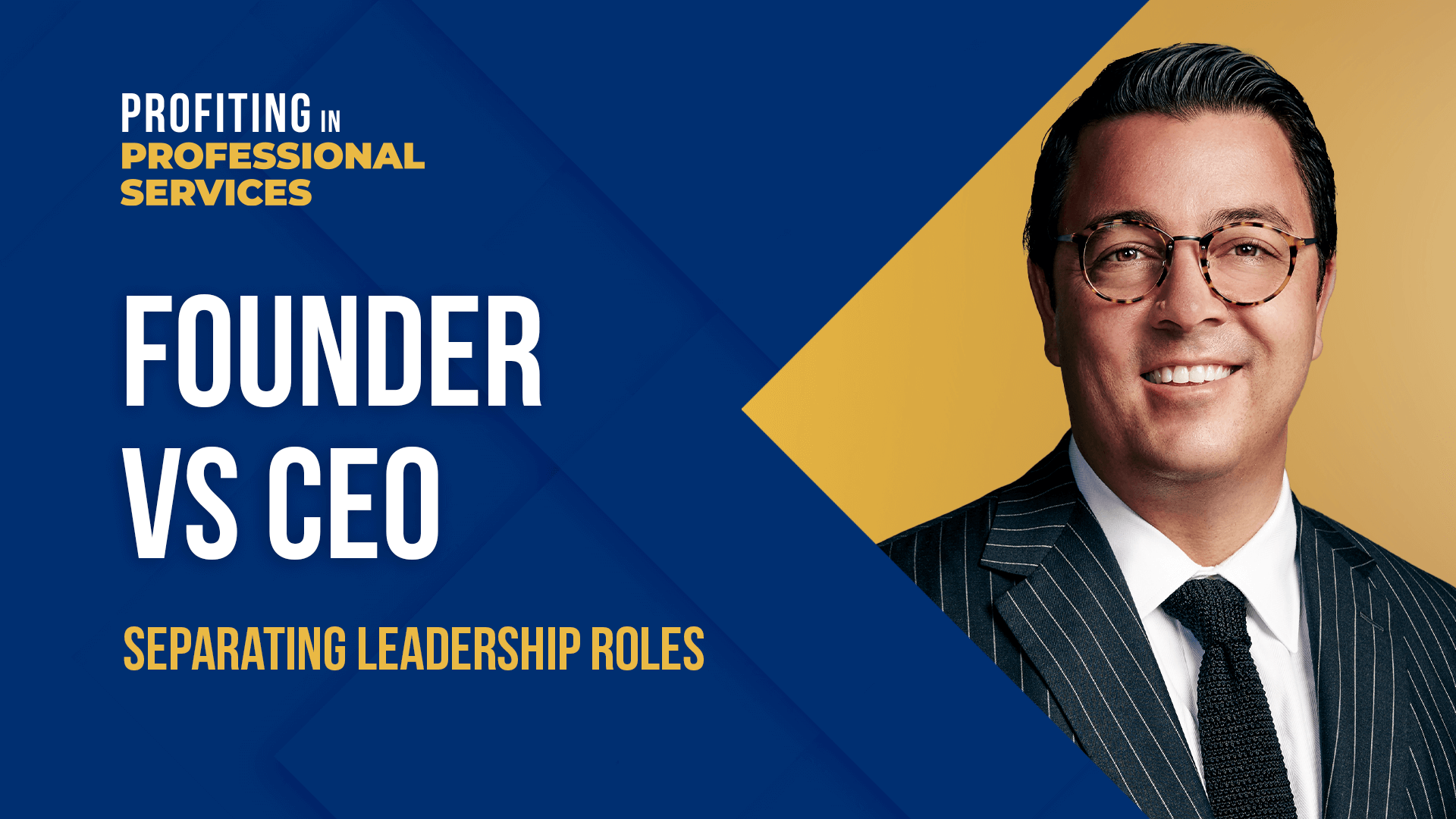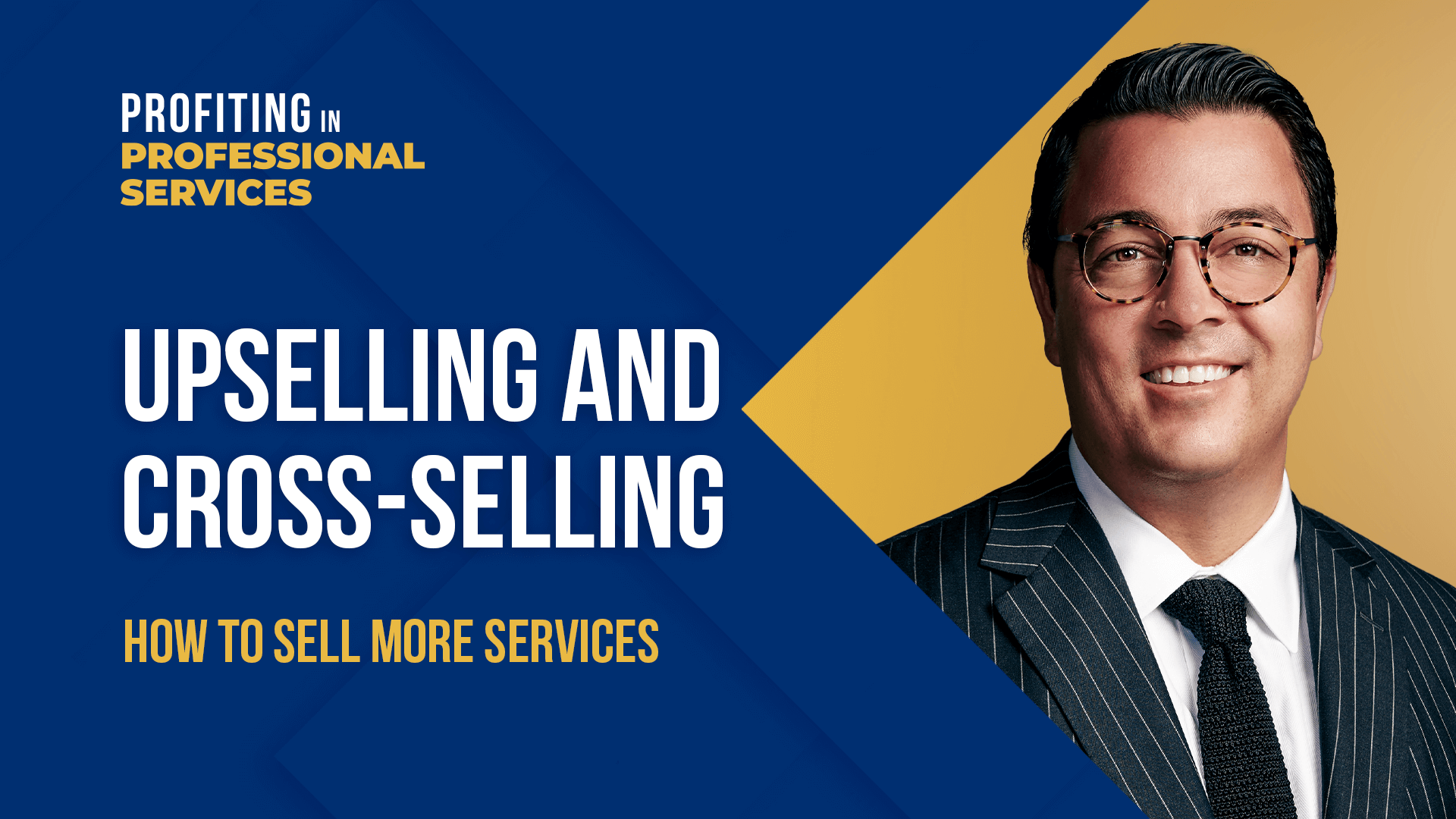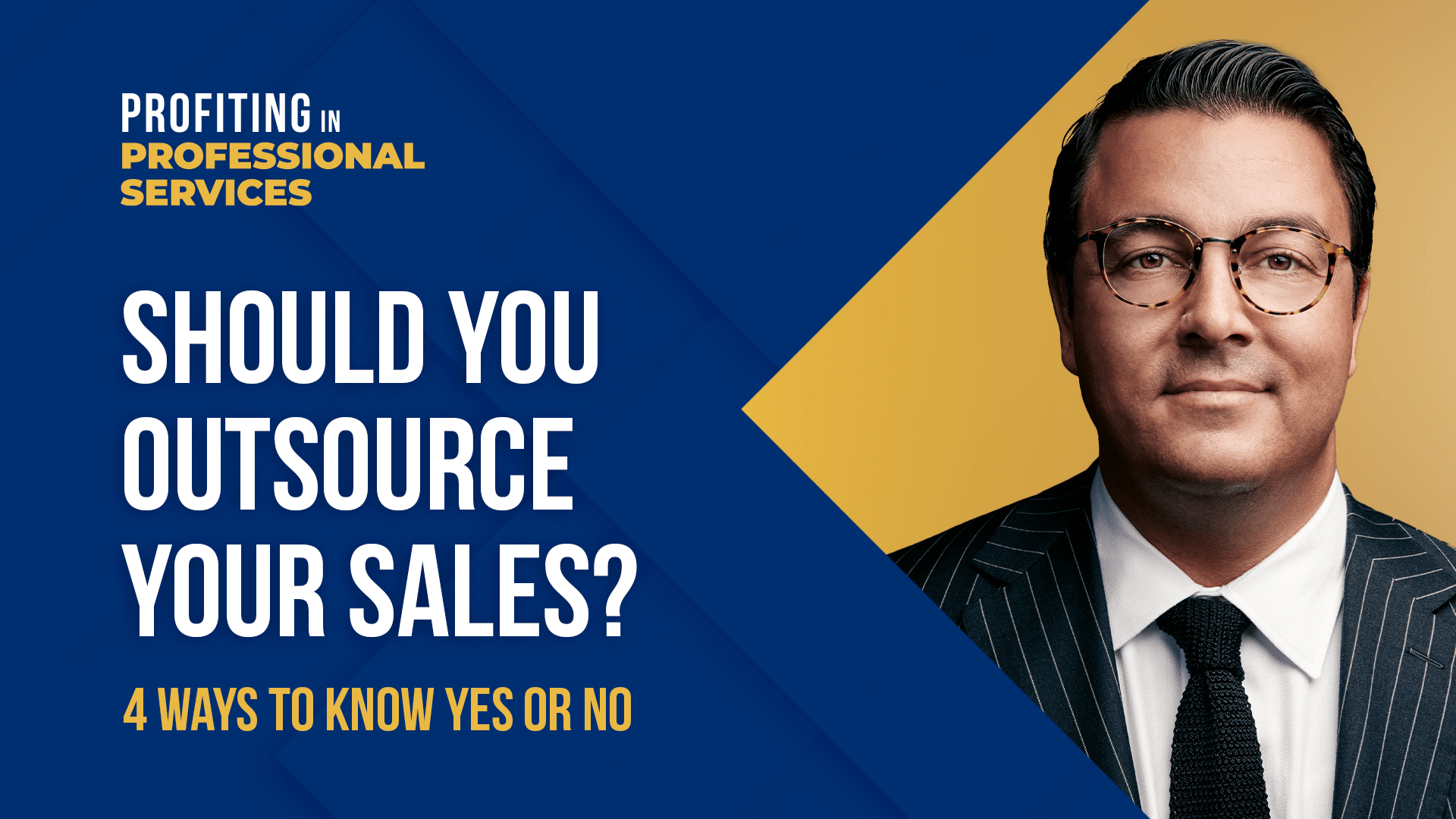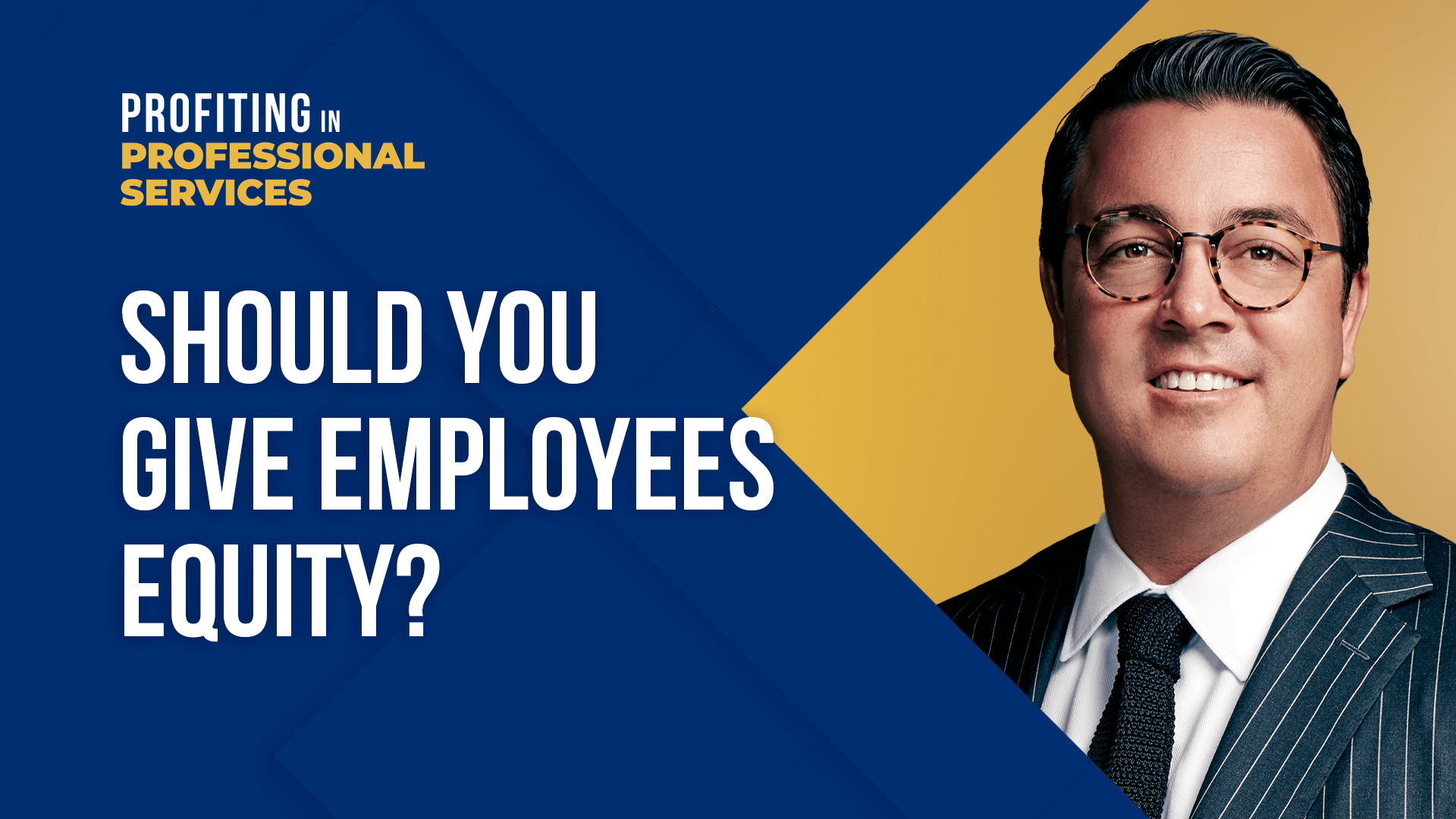#1 Reason Why Your Firm Isn’t Growing: The Elephant and Rabbit Problem
- Greg Alexander
Play Video
A firm becomes the projects they do and the clients they sign over time. And if you’re not intentional about the type of work you provide, you can end up with scalability problems.
So how do you make sure you’re working with the right clients and positioning your business for growth? This becomes easier when comparing two animals: Rabbits and Elephants.
Explore the difference between elephant and rabbit businesses in this video, problems that arise when you accommodate both, and tactics to keep you disciplined as you scale.
Watch this video to learn more about:
-
- Taking many clients at lower costs vs few clients at higher costs
- How to identify and take advantage of gateway projects
- Why you can’t scale by taking on different client types
